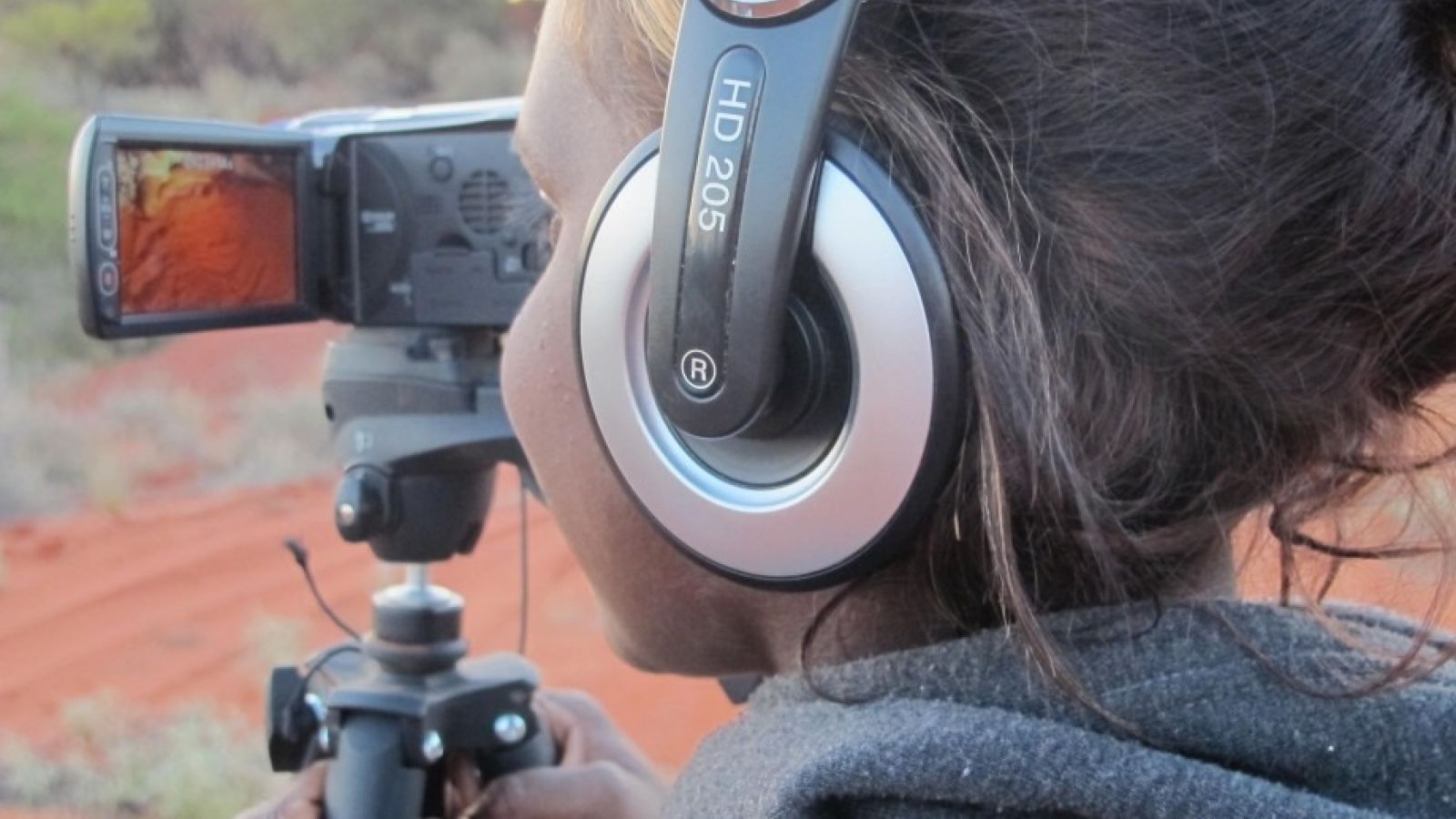Indigenous storytelling goes from red sands to iPads

ANU researchers have returned to the WA Western Desert communities of Warburton and Warakurna (Giles) this week for a film festival and to give back a treasure trove of recordings of local languages and cultural traditions made over the past decade.
Elizabeth Marrkilyi Ellis and Dr Inge Kral, linguists and translators from the Centre of Excellence for the Dynamics of Language and the ANU School of Literature, Languages and Linguistics, and Dr Jennifer Green from the University of Melbourne, have been working with Ngaanyatjarra and Ngaatjatjarra speakers to document their endangered verbal arts, including story-telling accompanied by drawing in the sand, and special speech registers.
One such speech register is yaarlpirri, or 'early morning talk', a particular public speech style to plan the day, make announcements, issue warnings, resolve conflict or provide other important information, and to tell jokes.
"With the coming of English, permanent houses and mobile phones you hardly hear these special types of languages anymore," Dr Kral said. "So we've asked how interaction with the modern world is leading to adaptation by looking at changes in language."
An innovative way to do this was to take the ancient, traditional practice of tjinytjatjunku tjuma ('to tell stories while drawing in the sand'), and record younger storytellers' adaptations of this practice to iPads.
"We first experimented with a game app, but then it became obvious that i-Pads could replicate both the visual space and the action of drawing on a surface from the sand-story medium," Dr Kral said.
"The girls were able to adapt very readily from sand to screen. They were pulling up the menu, choosing colours, shapes and sizes in no time. And we've ended up with a collection of beautiful digital films and pictures."
Two of the stories told and drawn by ten young women of the communities have now been published in a book. i-Tjuma uses stills from the iPad screens to accompany the Ngaanyatjarra and English texts.
In the first story, Joella Butler tells about a hunting trip; in the second Trisha Lewis recounts going to a disco. The books are also connected to the films online via QR codes.
The research team has also produced postcards with images from each of the i-stories, distributed wristband USBs with all the publicly available recordings, and demonstrated the use of a library box: a wi-fi hub that creates an interface between a USB stick and a user's mobile phone, allowing for immediate download.
"Giving back and providing community access is really important," Dr Kral emphasises. "We don't want this precious material to just end up in an academic archive.
"Young people from remote communities get such bad press, but that's not my experience at all," she adds. "They're vibrant, creative, new-thinking and taking the resources that are available to find new ways to express themselves.
"These verbal arts are part of the core values of this society and this shows that they continue on in different forms - nothing stays the same."